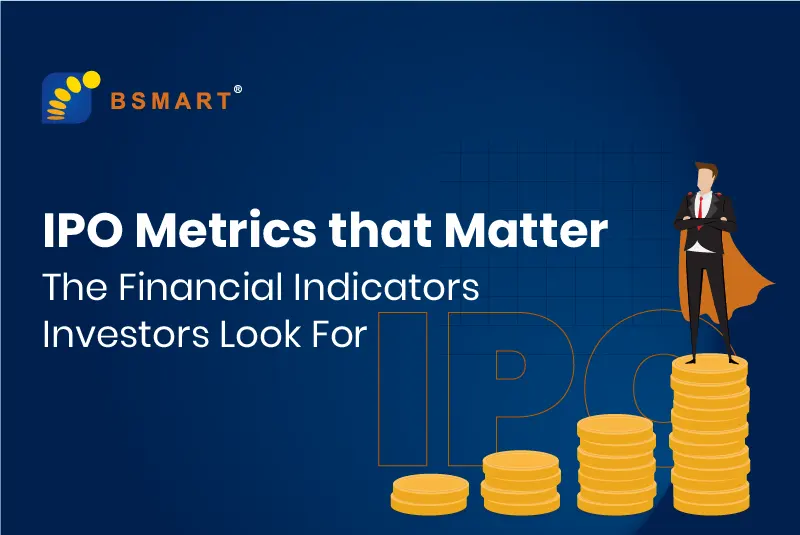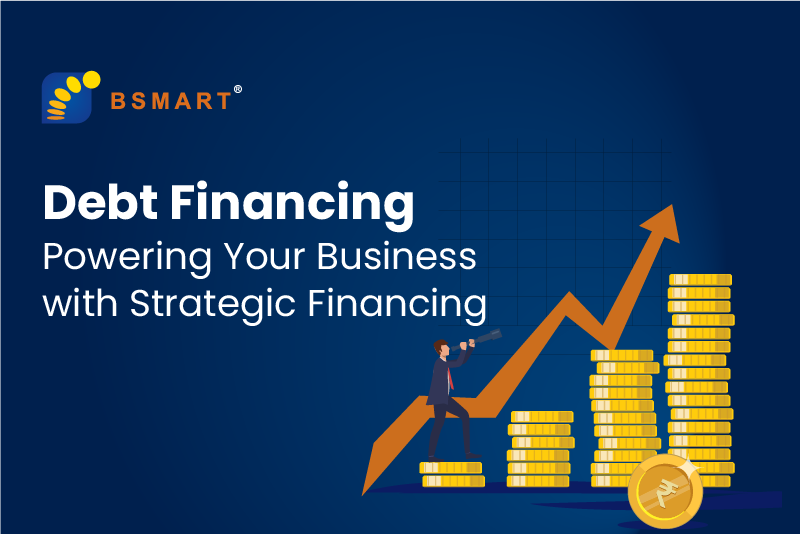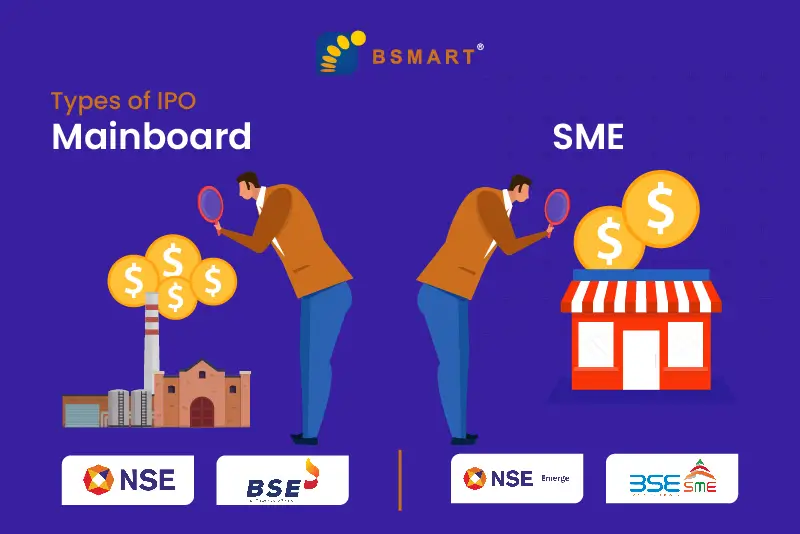IPO Metrics that Matter: The Financial Indicators Investors Look For

Every business dreams of scaling, but not all are prepared for the scrutiny that comes with going public. IPO readiness is a process, not just a checklist. It ensures that your company’s financials, operations, and governance stand up to investor expectations.
What it means for businesses:
Being IPO-ready involves more than financial preparation. It means having a solid foundation of corporate governance, operational transparency, and scalability. Investors want to see that your company can sustain its growth trajectory while adhering to public market expectations.
Key Considerations:
- Financial performance must be consistent and predictable.
- Internal systems, such as reporting and compliance, should align with regulatory requirements.
- The leadership team needs to demonstrate strategic vision and decision-making capability.
Why quantitative indicators matter:
Financial metrics are the lens through which investors evaluate a company’s viability. While storytelling and vision are important, the numbers need to back them up. Indicators like profitability ratios and balance sheet strength help investors understand:
- Whether the company is generating consistent returns.
- How well resources are being utilised.
- The potential risks involved in investing.
1. Understanding Profitability Ratios
Profitability ratios provide a clear picture of how well a company turns its revenues into profits, making them a crucial factor for IPO readiness. These metrics help investors evaluate whether the business is financially sound and capable of sustaining growth.
- Gross Margin: This metric measures the efficiency of a company’s core operations by showing how much profit remains after covering direct costs. A higher gross margin reflects strong cost control and robust pricing strategies, often indicative of a competitive edge.
- EBITDA (Earnings Before Interest, Taxes, Depreciation, and Amortisation): EBITDA focuses on the company’s operational profitability by excluding non-operational costs like taxes and depreciation. This makes it an ideal metric for comparing businesses across industries.
- EBIT (Earnings Before Interest and Taxes): Similar to EBITDA but with added depth, EBIT accounts for depreciation, making it particularly useful for assessing profitability in asset-heavy industries like manufacturing or real estate.
- Net Margin: Often referred to as the “bottom line,” this metric highlights how much of the company’s revenue translates into actual profit. Investors value steady net margins as they reflect a reliable and scalable financial model.
Example: A company with an EBITDA margin of 20–25% in its sector signals strong cost management, operational efficiency, and growth potential—qualities that make it an appealing candidate for IPO investors.
2. Returns Ratios: Efficiency in Value Creation
Returns ratios help investors gauge how effectively a company uses its resources to generate profits. These metrics are essential for understanding whether the business is optimising its capital to create value and sustain growth—key indicators for IPO readiness.
- ROCE (Return on Capital Employed): This metric evaluates how efficiently a company turns its total capital (debt + equity) into profits. A higher ROCE signals that the business is using its resources productively, generating more income for every rupee invested. It’s especially significant for industries that require heavy capital investments, such as manufacturing and utilities.
- ROE (Return on Equity): Focused on shareholder returns, ROE measures how much profit a company generates using the funds provided by its investors. It highlights the company’s ability to create value directly for shareholders, making it a key metric for industries with lighter debt burdens or equity-heavy funding models.
- ROCE vs ROE: While both metrics are critical, their relevance depends on the industry. For capital-intensive businesses like telecom or real estate, ROCE carries greater weight as it considers both equity and debt. On the other hand, ROE is particularly valuable for companies with minimal debt, such as tech startups or service-based businesses.
Example: A company with a ROCE consistently above 15% demonstrates efficient capital utilisation and strong growth potential. This reassures investors that the business can scale sustainably while maintaining profitability.
3. Balance Sheet Ratios: Measuring Financial Health
- The balance sheet offers a clear view of a company’s financial discipline and overall risk exposure. For investors, these ratios are critical to assessing sustainability and liquidity, particularly when determining IPO readiness. A key measure is the debt-to-equity ratio, which compares a company’s debt to its equity. A healthy balance here signals a sound approach to growth and risk management, with an optimal range typically falling between 0.5 and 1.0, depending on the industry.
- Liquidity is equally important, with metrics such as the current ratio and quick ratio providing deeper insights. The current ratio evaluates the company’s ability to meet short-term obligations and is ideally between 1.5 and 2. The quick ratio sharpens this assessment by excluding inventory, focusing solely on assets that can be quickly converted into cash. Together, these ratios help investors understand a company’s resilience in managing immediate financial pressures.
- Inventory turnover is another crucial metric that reflects how efficiently a business manages its stock. A higher turnover indicates better cash flow and reduced risks of overstocking or obsolescence, which are critical for maintaining operational efficiency. Additionally, cash flow management is reflected in debtor days and creditor days. Shorter debtor days highlight faster customer payments, improving cash flow. On the other hand, longer creditor days allow the company more time to manage payments, though excessively long periods may strain supplier relationships.
Example: a company with a debt-to-equity ratio of 0.8 and a current ratio of 1.8 signals robust financial health, demonstrating its ability to scale operations without excessive reliance on borrowed funds.
4. Topline Growth Trajectory: Sustaining Investor Confidence
- Revenue growth is the ultimate signal of a company’s market demand and operational success. However, for IPO investors, growth is not just about achieving impressive numbers; it’s about consistency, scalability, and the ability to outperform competitors over time. Companies that can demonstrate a steady upward trajectory in revenue over a period of three to five years offer reassurance that their success isn’t a one-off but a reflection of sustained demand and strong business fundamentals. This level of consistent growth reduces perceived risk and builds trust in the company’s ability to navigate future challenges.
- A company’s growth story becomes even more compelling when benchmarked against its industry. Businesses that grow at a faster pace than their sector peers are clear indicators of a competitive advantage. This advantage could stem from superior products, innovative services, operational efficiency, or strategic market positioning. Investors actively seek out these growth leaders as they often represent not just market participation but leadership.
- For businesses with longer sales cycles or recurring revenue models, maintaining a strong order book is another critical factor. An order book filled with pre-orders or long-term contracts provides a window into future earnings, giving investors’ confidence in predictable revenue streams. This level of visibility is especially valuable in sectors like manufacturing, technology, and infrastructure, where sales cycles are long, and investments require a high degree of certainty.
Example: Imagine a company consistently achieving 15% annual growth over five years, in an industry where the average growth rate is 10%. This performance doesn’t just highlight revenue generation—it positions the business as a market leader, creating a compelling narrative for IPO investors. The consistent growth, coupled with a robust order book and an industry-leading pace, showcases the company’s ability to seize opportunities and maintain its competitive edge.
5. How These Metrics Influence Investor Decisions
Numbers don’t lie, and for investors, these financial indicators are the litmus test for a company’s IPO readiness. Here’s why they matter:
- Profitability & Returns: Metrics like EBITDA, Net Margins, and ROCE demonstrate the company’s ability to generate consistent profits and sustain growth. These figures reassure investors that the business is operationally efficient and capable of weathering market fluctuations.
- Balance Sheet Health: Indicators such as the Debt-to-Equity Ratio and liquidity metrics (like the Current Ratio) reflect financial discipline. A healthy balance sheet signals that the company can manage obligations and pursue growth without excessive risk.
- Topline Growth: Consistent revenue growth over several years shows scalability and market demand. Businesses that outpace industry benchmarks stand out, offering investors confidence in their long-term value.
Example: A company with an EBITDA margin of 25%, a Debt-to-Equity ratio of 0.9, and annual growth exceeding industry standards illustrates strong profitability, financial stability, and market leadership, making it an attractive choice for IPO investors.
To summarise, Investors don’t just see numbers; they see the story those numbers tell. Whether it’s steady revenue growth, a balanced financial structure, or strong profitability, these metrics act as proof points for your business’s readiness to step into the public eye. The stronger the story, the more compelling your case becomes—both for the IPO and the future that lies beyond it.





